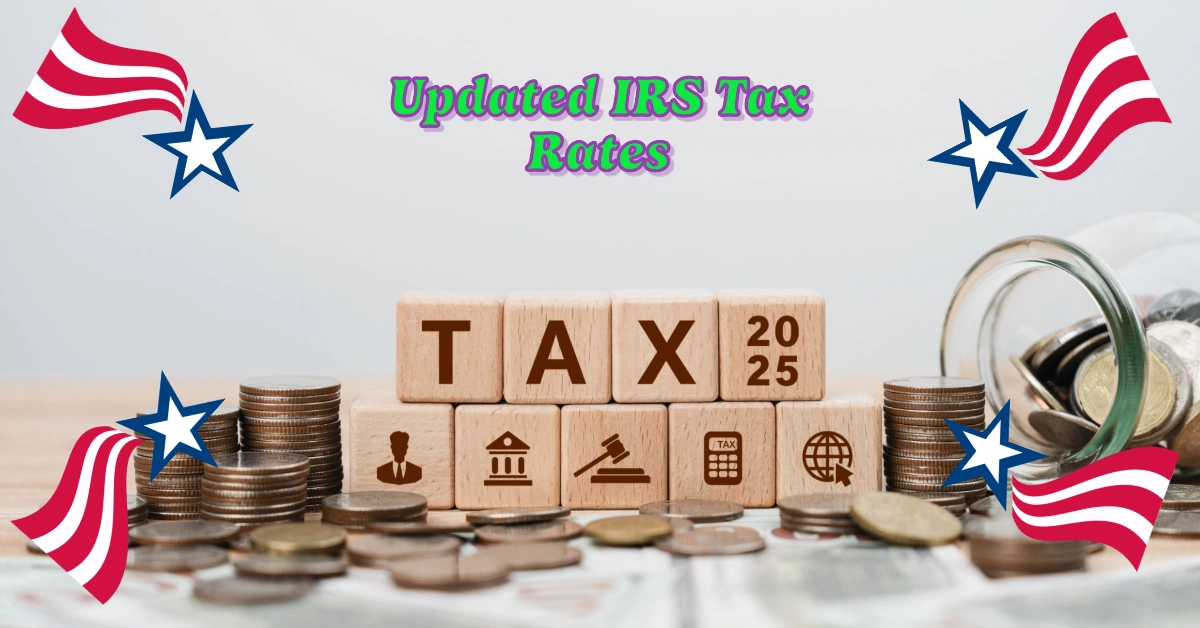The IRS has announced its revised tax brackets for 2025, bringing much-needed relief to millions of Americans grappling with inflation. These changes are designed to protect taxpayers from “bracket creep,” ensuring that small income increases don’t push people into higher tax rates. Whether you’re a wage earner or a retiree relying on Social Security, these updates could significantly impact your financial planning. Here’s an in-depth look at the new tax rates and what they mean for you.
Table of Contents
New IRS Tax Brackets for 2025: A Closer Look
The updated tax brackets adjust income thresholds to reflect inflation, providing tangible benefits to taxpayers. These changes help middle-income earners, particularly those close to the upper limit of their current tax bracket, by preventing them from being taxed at a higher rate due to modest income growth.
2025 Tax Bracket Table
| Tax Rate | Single Filers | Married Filing Jointly | Married Filing Separately | Head of Household |
|---|---|---|---|---|
| 10% | Up to $11,925 | Up to $23,850 | Up to $11,925 | Up to $17,000 |
| 12% | $11,925 – $48,475 | $23,850 – $96,950 | $11,925 – $48,475 | $17,000 – $64,850 |
| 22% | $48,475 – $103,350 | $96,950 – $206,700 | $48,475 – $103,350 | $64,850 – $103,350 |
| 24% | $103,350 – $197,300 | $206,700 – $394,600 | $103,350 – $197,300 | $103,350 – $197,300 |
| 32% | $197,300 – $250,525 | $394,600 – $501,050 | $197,300 – $250,525 | $197,300 – $250,500 |
| 35% | $250,525 – $626,350 | $501,050 – $751,600 | $250,525 – $375,800 | $250,500 – $626,350 |
| 37% | Over $626,350 | Over $751,600 | Over $375,800 | Over $626,350 |
These adjustments preserve purchasing power and provide clarity for tax planning. Middle-income earners, especially those earning between $80,000 and $180,000 annually, stand to benefit the most.
Impact on Social Security Recipients
The changes to tax brackets also affect retirees who rely on Social Security. While Social Security benefits are not automatically taxed, they can become taxable based on total income.
When Are Social Security Benefits Taxed?
- If your combined income (Social Security benefits + other income) exceeds $25,000 for single filers or $32,000 for married couples filing jointly, a portion of your benefits may be taxable.
- Up to 50% of your benefits may be taxed if your combined income surpasses the initial threshold. This percentage can increase to 85% for higher-income earners.
For example, retirees with additional income from investments or pensions could see a greater tax burden. Understanding these thresholds and strategically managing income can help minimize taxes on Social Security benefits.
New Wave of $700+ Stimulus Checks: Who Qualifies and What’s Next for 2025?
How to Get Up to $3,600 from the Child Tax Credit: Big Win for American Families
What are the Nationwide Benefits for Seniors Over 65 in America 2025?
SSA’s $22.8 Million Payment Mistake: What Went Wrong and How It’s Being Fixed
New York New Minimum Wage for 2025: Key Changes and Effective Dates
Who Benefits the Most from the 2025 IRS Adjustments?
- Middle-Income Earners:
Taxpayers earning just below the upper limits of their current bracket will avoid moving into a higher tax rate, allowing them to retain more of their income. - Professionals with Variable Incomes:
Freelancers and seasonal workers can better predict their tax liabilities, making financial planning more straightforward. - Retirees on Social Security:
Careful income planning can help retirees stay below taxation thresholds, avoiding surprises during tax season.
How to Maximize Benefits Under the New Tax Rules
- Review Your Income Levels:
Stay informed about where your income falls within the revised brackets to avoid unnecessary tax burdens. - Strategic Tax Planning:
Work with a financial advisor or tax professional to structure income in a way that minimizes taxes while maximizing benefits. - File Early:
Submitting your tax return early ensures faster refunds and helps you catch any issues related to income thresholds or deductions. - Optimize Deductions:
Use deductions effectively to reduce taxable income, especially if nearing a bracket threshold.
The IRS tax rate changes for 2025 are a welcome relief for many Americans, providing an opportunity to keep more of their hard-earned money. Whether you’re a middle-income earner, a freelancer, or a retiree, understanding these updates can help you plan effectively and avoid paying more than necessary.
With proper planning, you can take full advantage of these new tax rules, ensuring a brighter financial outlook in 2025 and beyond. Stay informed, file early, and consult a tax professional to make the most of these changes.

6 thoughts on “Americans Set to Benefit from Updated IRS Tax Rates for 2025”